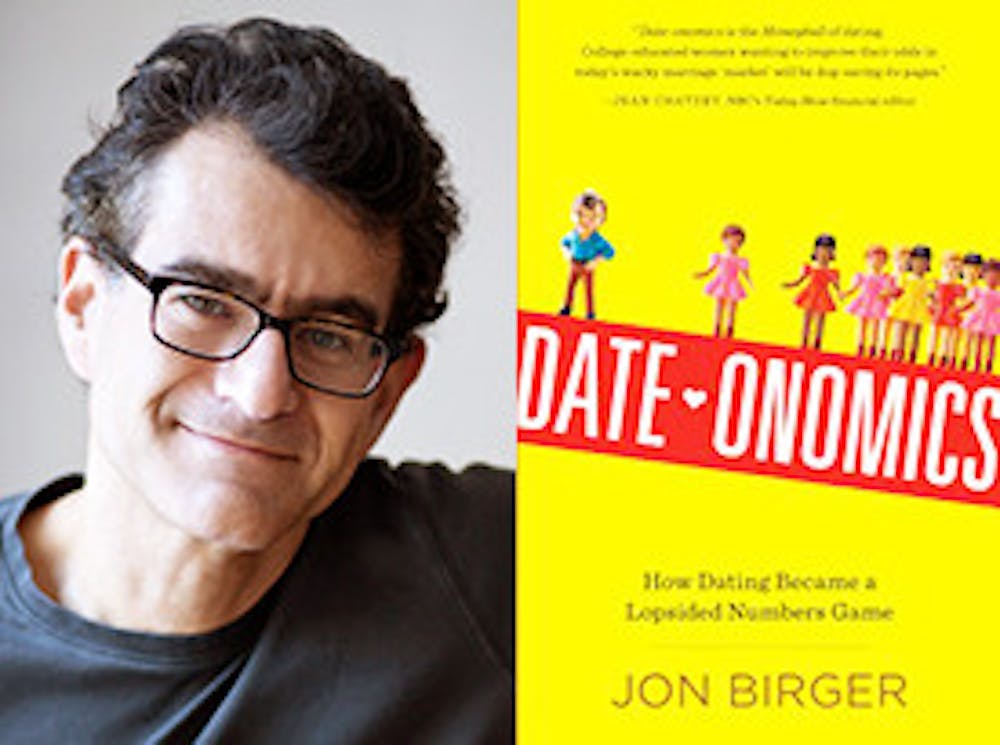Have you wondered why hookup culture has replaced old-fashioned dating? The explanation is more straightforward than expected.
According to Jon Birger ’90, people have not lost the desire for first dates and romantic dinners. This cultural shift can be reduced to a simple numbers game.
In his new book, “Date-onomics: How Dating Became a Lopsided Numbers Game,” Birger describes how the dating market is stacked against heterosexual women.
The gender ratios across college campuses and major cities show that more women populate these areas than men. With more women in any given area, heterosexual men become less committed to any particular woman. Instead, they become more interested in having casual relationships with multiple women. As men control the dating market, hookup culture quickly becomes the norm.
Birger utilizes economics, statistics and psychology to explain why gender ratios are skewed in favor of men and how “dating” has become an antiquated term in many locations. But there are certain cities and colleges in which the ratios are either closer to 50-50 or are even skewed toward men. In these places, dating is more common, and women looking for husbands can find a partner more easily.
Where should women looking for serious relationships flock? Birger suggests they head west. The Bay Area is the ideal place, particularly Silicon Valley, which is filled with techies and engineers earning top salaries and working killer hours every week. As these industries are male-dominated, so are the towns and cities situated around Silicon Valley.
In these areas, the dynamics that favor men in most other cities are flipped. Here, women interested in men have their pick, and dating becomes easier. While California provides the ideal ratio, Utah, Colorado and Wyoming are all respectable options.
What is the worst place for women who want to settle down? Manhattan. In his book, Birger urges readers to consider their job locations as well as their career fields if they want to find a spouse. For younger readers, he suggests starting early by carefully choosing a college that has a strong dating culture. For example, heterosexual women intent on dating in college might choose the California Institute of Technology, whose student body is 64 percent men. Sarah Lawrence College offers less encouraging prospects, as 75 percent of its students are women.
Yet Birger’s book is not the catch-all for dating. He only describes the marriage market for college-educated heterosexual women. While he briefly touches upon a man’s best bet to find a woman, the majority of the book is spent describing men as players who are only after the number of hookups they can rack up each week.
According to his way of thinking, women are portrayed as vulnerable and in need of the most help in finding their future husbands. Birger also only focuses on the heterosexual dating market. While he mentions the same-sex dating market, it is in passing and not as deeply considered as the heterosexual, college-educated marriage market. In summary, Birger’s book takes a parochial view on dating and marriage and speaks directly to those who are the most privileged and educated.
Still, the book makes women consider the future in a unique light. Rather than immediately taking a job in Manhattan, women who buy into Birger’s philosophy might look into other options, such as moving west or pursuing a career in a field dominated by men.
Birger ultimately leaves the reader with one question: Would you consider marrying outside of your socioeconomic circle? Birger concludes that for women to have more marriage options, they must think about marrying a non-college-educated, blue-collar man. Differing education levels should not be stigmatized. Marriage is about love — not about money or class. In order for women to have more options, they must challenge gender roles and embrace their powerful femininity.





